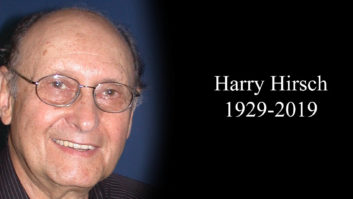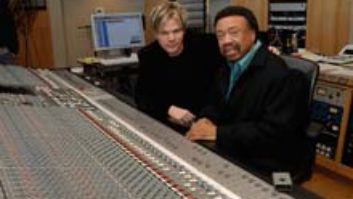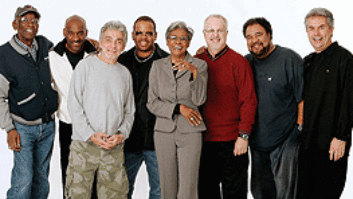Twenty years ago, composer/keyboardist Dave Grusin and producer Larry Rosen launched GRP Records as an independent outgrowth of the contemporary jazz projects that they had collaborated on and cut for GRP when it was an Arista Records imprint. Their label was one of the first to embrace the then-new digital recording technology, and the label quickly established itself as a major force in the jazz world, even though many mainstream and progressive jazz types decried the label’s focus on “commercial” sounds — the age-old jazz debate.
Since its pioneering days in the early ’80s, when the label was synonymous with a particular type of easily digestible “smooth jazz,” a lot has changed at GRP. MCA (now Universal Music) purchased the company from founders Grusin and Rosen in 1990. In 1994, renowned producer Tommy LiPuma became its president and streamlined the company roster, dropping a number of the label’s less “contemporary” artists. (LiPuma is now CEO of GRP/Verve.) Many jazzers still don’t like GRP, but it is regarded by most of the musicians who have recorded for the label as an “artist-friendly” company. Keyboardist David Benoit has been with the label since the mid-’80s and recorded more than a dozen different solo projects there. “Not only have I done all of my albums, but also their first big band records, a Beatles tribute and Christmas CDs,” he comments.
To commemorate the company’s 20th anniversary, GRP has compiled a double-CD chronicling its history. Though GRP’s catalog is quite diverse, spanning new age to traditional mainstream jazz, for this special collection, the emphasis was on the label’s hit contemporary-jazz material. Additionally, two new bonus tracks were created that feature saxophonist Richard Elliot, guitarist Jeff Golub and Benoit. The keyboardist states, “I feel like I’ve been involved with the label as much as anybody outside of Dave Grusin, from almost the beginning. So I felt very proud to be part of the new tunes.”
Placed in charge of producing the set was Bud Harner, VP of A&R for Verve/GRP. He’s a drummer and industry veteran who worked in radio promotion before advancing to his current position three years ago. Before coming to the company, he worked at the now-defunct independent label Mesa/Blue Moon. Along with finding and developing new talent, he produces some of GRP’s contemporary-jazz projects.
“It came up that the company had been around for 20 years, which was kind of a milestone,” Harner explains, “and we wanted to celebrate and draw some attention to that fact. Once we decided to do this, we thought it would be a good idea to put a couple of new songs on the album, so they asked me to put together a couple of tunes, figure out what to do with them and who would play on them. I came up the idea of grouping a few of our guys [Elliot, Golub and Benoit]. We’re calling them ‘Group 3,’ with the possibility of doing other things in the future.
“One of the first moves I made was to bring [trumpeter] Rick Braun into the picture,” Harner continues. “He’s with Warner Bros. and isn’t a GRP artist, but he’s a great producer. We’ve worked well together on other recordings, and he has a great knowledge of loops. That’s where he and I usually start — with a drum groove, having a tempo and a feel in mind. Then we’ll start going through his collection of loops and find something we like.”
A cover of Steve Winwood’s “Roll With It” is one of the new tracks, a choice that came to Braun while he was out dining with his family — he heard it over the restaurant’s sound system and instantly knew an instrumental version would make a perfect bonus track for the GRP anniversary project. The other tune was chosen from various producers’ and artists’ submissions; ultimately, Jeff Lorber’s “Uncle Darrow’s” (named after a Cajun restaurant in L.A.) got the nod. For both selections, Nick Lane conceived the horn arrangements and basic charts for the supporting drummer and bassist.
With the new tunes approved and mapped out, all that was left was to record and mix them. Unfortunately, only one day was allotted for the recording. “It was all live and a bit intensive,” recalls Steve Sykes, the engineer for the project. “It was supposed to be ‘straight live,’ with everyone playing at once, but there were pre-recorded MIDI tracks that came from Jeff Lorber for the guys to play to, so it became a regular pop/R&B production. The Winwood tune was the easier of the two, because everyone was in there just blowing.”
The entire process from recording to mixing was done in Pro Tools at various studios. Sykes has a full-blown system at his home studio in the Los Angeles suburb of Woodland Hills, where Braun and Harner literally live down the street from him. For the session done at Schnee’s Studio in North Hollywood, the engineer brought in his “hot-swap” drive, which interfaced with the studio’s Pro Tools system.
Formerly a hard-working session guitarist, engineer Sykes was able to use his musical knowledge to great effect on the session, reading the charts, and mapping out Lorber’s CD-Rs to bars and beats with a click track. Additionally, he was able to line up the loops with the bar numbers on the charts, which greatly aided the session players.
Back at Sykes’ home studio, the final prep and mixing of the tracks became more involved than originally anticipated. Before actually getting down to mixing, the engineer spent several days conforming Lorber’s original “Uncle Darrow’s” tracks with the ones done at Schnee’s. “The feel that Jeff Lorber had on it was very different from the ones with added live musicians,” Sykes explains. “All of his little parts didn’t feel good against the rhythm section. When the band played, they brought their own magic to it. It’s not a slam on Lorber; just a compatibility issue. Thank God I had Pro Tools to modify his parts so that they feel like he was with the players at Schnee’s. His stuff was more laid back, while the band had a pushy feel.”
During mixing, Harner, Braun and Sykes rewrote the horn arrangements. Due to the brevity of the tracking sessions, some of the desired emphasis was missed. All the notes were there, though; so in Pro Tools, they cut and pasted different notes in various places. “Basically, we work real well as a trio here,” Sykes comments. “Bud comes up with different points of view on how things should come in rhythmically and especially what shouldn’t play where. Rick is more hands-on, usually doing basic tracks and MIDI stuff.” Final mixdown was also done on Pro Tools.
Unquestionably, GRP has evolved greatly since 1982 and plans to be around for many decades to come. One thing that hasn’t changed for the label since its inception is the emphasis on quality, staying abreast of new technology and being alert to new styles of jazz. “We weren’t just going in and whipping something out real quick,” Harner stresses. “I wanted to make sure the songs were good and worthy of the other acclaimed music that’s on this project. It’s hard to say what’s going to come along, but we’ll be keeping up with new sounds and recording styles.”






